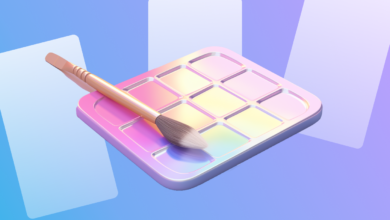Designing Custom Products for Print on Demand
Starting a drop-shipping business selling print-on-demand products can be straightforward by uploading an image and setting up an online shop. However, the process may appear overwhelming for new entrepreneurs.
In 2024, the total U.S. sales from on-demand printing on items like apparel and posters reached an estimated $2.3 billion. The print-on-demand dropshipping industry is expected to grow significantly, reaching around $26 billion in 2034.
Let’s explore two examples: (i) an AI-generated t-shirt uploaded to Printful and (ii) a simple wall art design added to Prodigi.
Sourcing Artwork
Regardless of whether a shop sells t-shirts, postcards, or wall art, the design is the key product. Customers are purchasing the art. Where can entrepreneurs find art, and what are the arrangements for reselling it?
There are at least seven ways to source artwork for print-on-demand products:
- Create it: Artists and designers can create their own art using tools like Canva or Photoshop.
- Hire a freelance designer: Entrepreneurs can commission custom artwork from freelance designers on platforms like Fiverr and Upwork.
- Collaborate with artists: Partner with artists on platforms like Behance or ArtStation for various arrangements.
- Buy stock images: Purchase licensed stock images from sites like Shutterstock or Adobe Stock.
- Use ready-made designs: Many print-on-demand companies offer pre-made designs.
- Use public domain art: Utilize artwork in the public domain for print-on-demand products.
- Have AI generate it: Use artificial intelligence models to create artwork.
In 2023, Kevin Stecko from 80sTees.com highlighted the importance of licensing artwork, especially for characters from entities like Disney, Star Wars, or Marvel comics.
Printful
Let’s dive into creating and publishing a product in Printful, assuming the seller has a Printful account integrated with a Shopify store through an app.
Products are “templates” in Printful, allowing merchants to add new products after creating a collection.
Creating a new product starts with selecting the item to sell, such as a t-shirt, and choosing colors and sizes.
Printful guides online sellers through the setup process, facilitating updates to selections like color and size.
Uploading the t-shirt design, whether AI-generated or otherwise, is a simple process like uploading any file online.
Uploading the design is quick and straightforward, with large files loading in seconds.
Merchants can further customize the t-shirt by adding logos or additional artwork to various areas.
Printful allows merchants to add graphics to different parts of the t-shirt.
The newly designed t-shirt can be added to the integrated Shopify shop almost instantly.
After selecting mockups, naming the product, and customizing its description, Printful seamlessly pushes the product to Shopify.
Prodigi
Prodigi is another print-on-demand provider. In this scenario, the Prodigi account is connected to a Squarespace shop.
Prodigi and Squarespace integration requires merchants to work in both platforms to complete the process.
The process involves selecting items to be variations of the Squarespace product, like a specific frame for an art print.
Prodigi’s editor allows for placement and alignment adjustments.
After finalizing details like product mockups and descriptions, the product is ready for fulfillment through Squarespace.
The merchant adds the product details to Squarespace, with Prodigi handling order fulfillment.
Print-on-demand
The process of sourcing art, selecting products, and uploading art is similar across various print-on-demand services. Apart from Printful and Prodigi, other suppliers like Gooten, Gelato, and Sellfy offer different options and integrations with ecommerce platforms.
Each supplier has unique strengths and integration levels with different platforms. For example, Prodigi integrates well with Squarespace but may have different compatibility with other platforms.
Frequently Asked Questions
1. Can I use AI to create artwork for print-on-demand products?
Yes, artificial intelligence can be utilized to generate artwork for print-on-demand products, providing a unique and efficient way to create designs.
2. Are there limitations on using licensed stock images for print-on-demand products?
When using licensed stock images, it’s essential to ensure that the commercial rights allow for the images to be used on print-on-demand products.
3. How can I collaborate with artists for print-on-demand products?
You can find artists on platforms like Behance or ArtStation and negotiate deals such as licensing fees or revenue sharing for using their artwork on print-on-demand products.
4. What are the benefits of using public domain art for print-on-demand?
Public domain art can be used and modified freely for print-on-demand products, providing a wide range of creative options without copyright restrictions.
5. How can I ensure my print-on-demand products comply with licensing requirements for popular characters?
When using artwork featuring characters from entities like Disney, Star Wars, or Marvel comics, it’s crucial to obtain proper permission and licensing to avoid legal issues.



